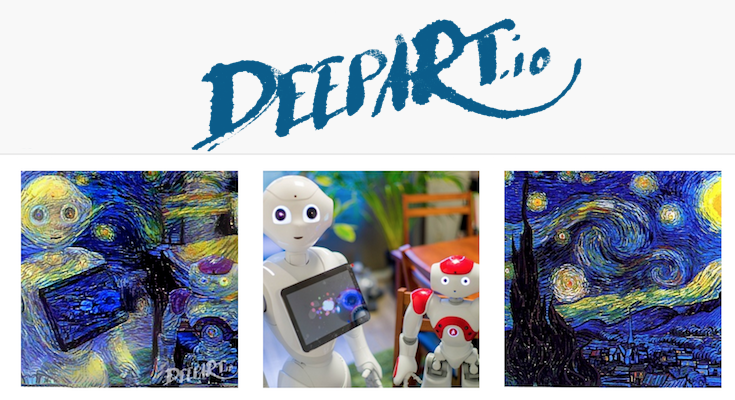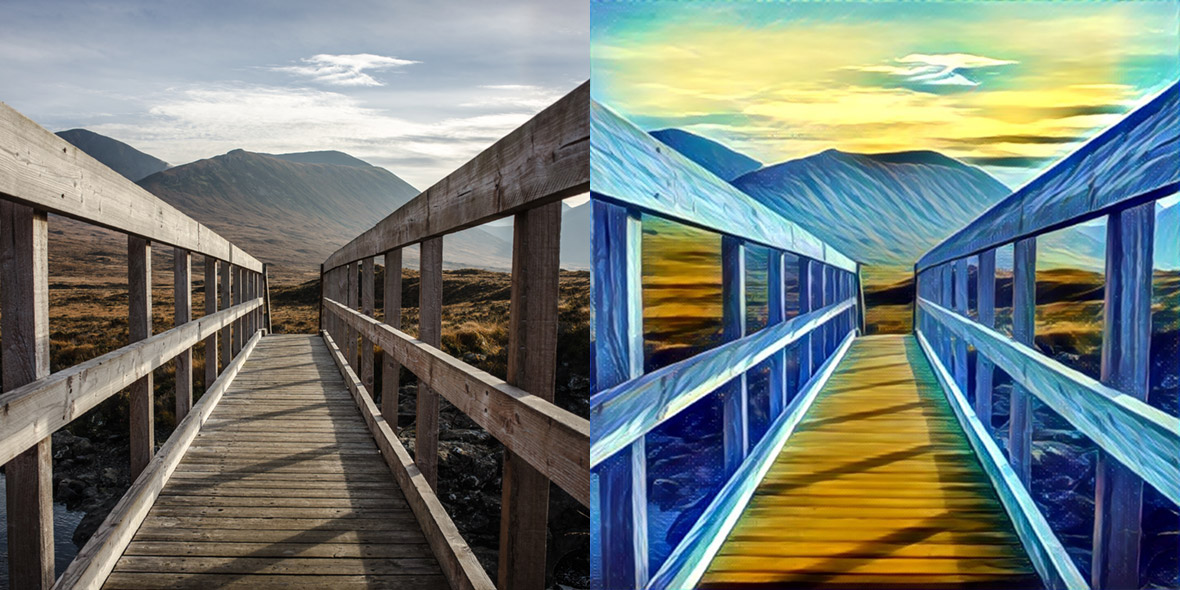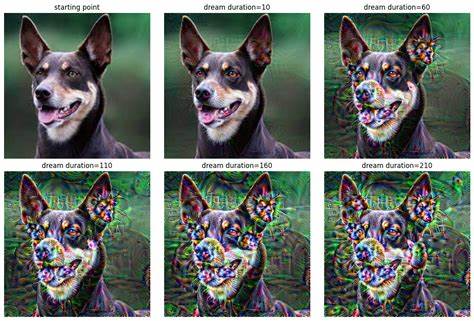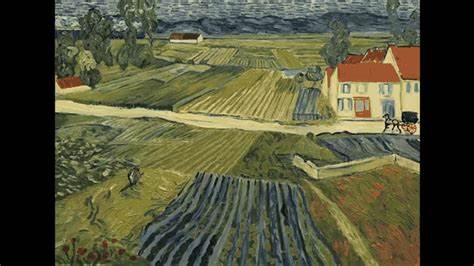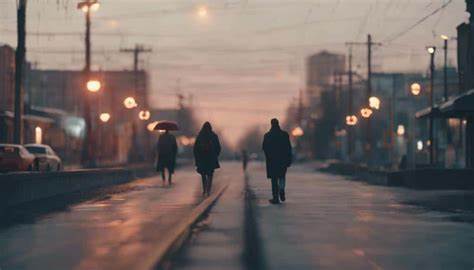How Transforming Photos into Art with AI? The intersection of artificial intelligence (AI) and art has opened new avenues for creativity and innovation. One of the most fascinating applications of AI in this realm is the transformation of photos into art.
This process involves using AI algorithms to convert ordinary photographs into artistic masterpieces, emulating the styles of famous painters or creating entirely new aesthetics. This article delves into several case studies that highlight the transformative power of AI in turning photos into art, showcasing the technology, techniques, and impact on the art world.

How Transforming Photos into Art with AI?
Case Study 1: DeepArt.io
- Background:io is one of the pioneering platforms in the AI art transformation space. Launched in 2015, it leverages deep neural networks to convert photos into artwork. The platform gained significant attention for its ability to mimic the styles of famous artists like Vincent van Gogh, Pablo Picasso, and Edvard Munch.
- Technology:io uses a technique known as neural style transfer, which involves training a convolutional neural network (CNN) to separate and recombine the content and style of images. The content of a photograph is preserved while the style of a chosen artwork is applied to it.
- Impact: The platform democratized access to artistic transformation, allowing anyone with a photo to create a piece of art. Artists and designers have used DeepArt.io for inspiration, while casual users enjoy the novelty and personal value of transforming their photos.
Example:
A notable example is the transformation of a simple landscape photo into a Van Gogh-style painting. The swirling brushstrokes and vibrant colors characteristic of Van Gogh’s work breathed new life into the photograph, creating a visually striking piece.
Case Study 2: Prisma
- Background: Prisma, launched in 2016, is a mobile application that quickly became a viral sensation. It uses AI to transform photos into artworks using various artistic filters. Prisma’s ease of use and the quality of its transformations made it a favorite among social media users.
- Technology: Prisma employs neural networks and deep learning algorithms to analyze the content of photos and apply artistic styles. The app offers a wide range of filters, each inspired by different art movements and famous artists.
- Impact: Prisma’s success highlighted the growing interest in AI-driven art transformation. The app’s widespread use demonstrated the potential for AI to make art creation accessible to a broader audience. It also sparked discussions about the role of AI in creative processes and its implications for traditional art forms.
Example:
One of the popular filters on Prisma transforms photos into artworks resembling the style of Picasso. A portrait photo, when processed through this filter, becomes a cubist masterpiece, with fragmented shapes and bold colors creating a dynamic and abstract representation.
Case Study 3: Google DeepDream
- Background: Google’s DeepDream, introduced in 2015, takes a different approach to AI art transformation. Initially developed to visualize and understand how neural networks work, DeepDream soon became known for its ability to create surreal and psychedelic images from photographs.
- Technology: DeepDream uses a process called “inceptionism,” where a neural network is fed an image and then asked to enhance and exaggerate the patterns it recognizes. This iterative process results in dream-like, often hallucinogenic visuals that amplify the original content.
- Impact: DeepDream’s unique and otherworldly aesthetic captivated the art community and the public. It pushed the boundaries of what AI-generated art could look like and inspired artists to explore new dimensions of creativity.
Example:
A simple photo of a dog, when processed through DeepDream, can be transformed into a kaleidoscopic vision where the dog’s features are duplicated and morphed into a fantastical array of eyes and shapes, creating a mesmerizing and unsettling image.
Case Study 4: Artisto
- Background: Artisto, another mobile application launched in 2016, focuses on transforming videos, as well as photos, into art. It gained popularity for its ability to apply artistic effects to moving images, creating a new dimension for AI-driven art.
- Technology: Artisto uses neural networks to analyze video frames and apply artistic styles consistently across each frame. This ensures that the transformation is smooth and coherent, maintaining the integrity of the original video while infusing it with artistic elements.
- Impact: By extending AI art transformation to video, Artisto opened new possibilities for filmmakers and video content creators. It allowed for the creation of artistic short films and visually stunning social media content, broadening the scope of AI’s influence on digital art.
Example:
A user could take a simple home video of a cityscape and transform it into a moving Van Gogh painting, with the city’s lights and movements rendered in swirling, colorful brushstrokes, creating an immersive and dynamic piece of art.
Case Study 5: Runway ML
- Background: Runway ML is a platform designed for creative professionals, providing tools for AI-powered video editing and image generation. Launched in 2018, it offers a range of machine learning models that can be used to transform photos and videos into art.
- Technology: Runway ML uses advanced neural networks and generative models to apply artistic styles to photos and videos. The platform’s user-friendly interface allows artists to experiment with different models and parameters, customizing the output to their preferences.
- Impact: Runway ML has been embraced by professional artists, filmmakers, and designers for its versatility and creative potential. It supports a wide range of projects, from experimental art pieces to commercial video productions, showcasing the broad applicability of AI in creative industries.
Example:
An artist used Runway ML to transform a series of photographs taken during a trip into a cohesive visual story, with each photo rendered in the style of different art movements. The result was a unique and engaging narrative that combined personal memories with artistic expression.
Case Study 6: DALL-E
- Background: DALL-E, developed by Open AI and introduced in 2021, is a generative model capable of creating images from textual descriptions. While not strictly a photo-to-art transformation tool, its ability to generate artistic images from scratch based on descriptions showcases the potential of AI in creative endeavors.
- Technology: DALL-E uses a type of neural network known as a transformer to understand and generate images from text prompts. It can combine different concepts in novel ways, producing highly imaginative and artistic visuals.
- Impact: DALL-E’s capabilities have sparked widespread interest in AI-generated art. It has been used to create everything from whimsical illustrations to complex conceptual art, demonstrating AI’s potential to assist artists in the ideation and creation process.
Example:
A text prompt describing “a cat in the style of Salvador Dalí” could result in an image of a cat with surreal, melting features, blending Dalí’s distinctive artistic style with the concept of a cat in a way that is both surprising and artistically coherent.

Challenges and Ethical Considerations
While the transformation of photos into art with AI presents exciting possibilities, it also raises several challenges and ethical considerations. These include concerns about the originality and authenticity of AI-generated art, the potential for misuse of copyrighted styles, and the broader implications for the art industry.
Originality and Authenticity
One of the main challenges is determining the originality of AI-generated art. Since AI algorithms are trained on existing artworks, questions arise about the extent to which the final product is a new creation versus a derivative work.
Copyright and Fair Use
Using AI to replicate the styles of famous artists can lead to copyright issues, particularly if the original artworks are still under copyright protection. This raises questions about fair use and the rights of artists whose work is used to train AI models.
Impact on Artists
There are concerns about how AI-generated art might affect traditional artists and the art market. While some view AI as a tool that can enhance artistic expression, others worry that it might devalue human creativity or lead to job displacement in creative fields.

Conclusion
The transformation of photos into art using AI represents a fascinating convergence of technology and creativity. Through the case studies of DeepArt.io, Prisma, Google DeepDream, Artisto, Runway ML, and DALL-E, we see a diverse array of approaches and applications that highlight the potential and challenges of AI in the art world.
As AI continues to evolve, it will undoubtedly open new frontiers for artistic expression, prompting ongoing discussions about the role of technology in creativity and the future of art.
FAQs
Q1: What is AI art transformation?
AI art transformation is the process of using artificial intelligence algorithms to convert photographs or images into artwork. This can involve emulating the style of famous artists, applying unique artistic filters, or creating entirely new aesthetics.
Q2: How does neural style transfer work?
Neural style transfer is a technique that uses a convolutional neural network (CNN) to separate and recombine the content and style of images. By preserving the content of a photograph and applying the style of a chosen artwork, the AI can create a new image that blends both elements.
Q3: Can anyone use AI tools to create art?
Yes, many AI art transformation tools are designed to be user-friendly and accessible to the general public. Platforms like DeepArt.io and apps like Prisma allow anyone to upload a photo and transform it into a piece of art with just a few clicks.
